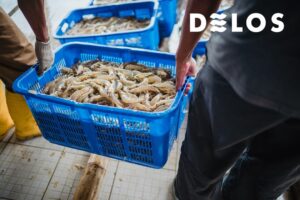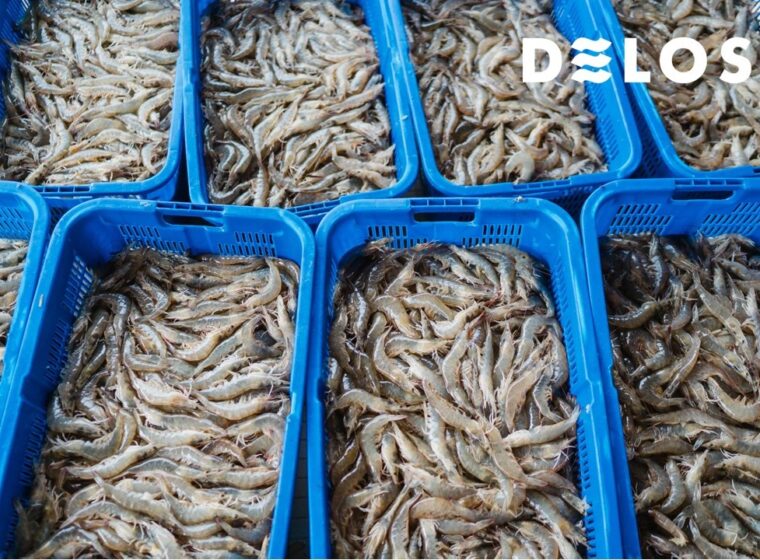
Shrimp has become one of Indonesia’s high-value seafood export commodities and is in high demand in the global market, including the European Union. Although Indonesia’s shrimp exports have been somewhat fluctuating, shrimp remains a prominent product in the market.
The European Union, comprising 28 countries, is the world’s largest market for seafood commodities. However, the export standards of these countries tend to increase year by year.
Therefore, in this article, DELOS has compiled a guide on how to export shrimp to the European Union.
Also Read: Want to Export Shrimp to the United States? Pay Attention to These Requirements
Export Potential of Shrimp to the European Union
In recent years, Indonesia has ranked among the top 10 shrimp suppliers in the European Union market. This demonstrates the significance of Indonesian shrimp, despite the high standards applied by European Union countries.
Furthermore, the recent increase in the value of shrimp exports to the European Union also reflects the quality of Indonesian shrimp. This is undoubtedly a positive trend that producers of shrimp should strive to maintain.
Moreover, Indonesia and the European Union have the Comprehensive Economic Partnership Agreement (IEU CEPA), which serves as an alternative for trade and economic issues between Indonesia and European Union countries. This agreement can assist Indonesian shrimp producers in increasing export volume and expanding market share in the European Union.
Also Read: Shrimp Market Potential in China: Opportunities and Export Requirements
Regulations and Export Standards for Shrimp to the European Union
Before entering the European Union market, Indonesian shrimp producers must meet strict health and safety requirements. These requirements include:
- Shrimp must be caught from registered vessels (for wild-caught shrimp) or originate from certified aquaculture facilities (for farmed shrimp).
- Shrimp must have a health certification.
- Shrimp must pass inspection at the European Union border before entering the market.
To meet the above requirements, Indonesian shrimp producers must pay attention to several key factors, including:
– Shrimp can only be exported if obtained or prepared in recognized and certified locations. Therefore, shrimp farmers must obtain permits and certifications from relevant ministries or agencies, such as the Ministry of Maritime Affairs and Fisheries, Ministry of Health, Ministry of Trade, and others.
– The health certification serves as confirmation that the shrimp being exported to the European Union meets local standards. When the product arrives in the European Union, relevant officials will inspect it, including checking documents, identity, physical examination, and the health certificate. If the inspection results are approved, the shrimp can enter the European Union market.
– To ensure that exported products to the European Union are safe and free from contamination by hazardous substances, imported shrimp must meet local safety standards. Shrimp and other seafood products have limits for the maximum content of heavy metals (lead, cadmium, mercury), dioxins, and types of dioxin polychlorinated biphenyls (PCBs) and polycyclic aromatic hydrocarbons (PAHs).
– For farmed shrimp, there is an additional requirement regarding the residues of animal medicines contained in them. In this case, the European Union requires every exporter to report an annual residue monitoring plan to the relevant body in the European Union.
– For wild-caught fisheries, to avoid illegal fishing practices, the European Union requires exporters to attach a catch certificate to prove that the seafood product complies with international conservation regulations. The certificate must be validated by the Ministry of Maritime Affairs and Fisheries of the country of origin and registered with the European Union a few days before the product reaches the border.
– Regarding labelling, the European Union also has strict regulations. The European Union sets requirements to ensure that consumers receive important information about the product. Therefore, manufacturers must include complete information on the product label before it is marketed.
Also Read: Exporting Shrimp to Japan: Procedures and Requirements
Start Exporting Vannamei Shrimp with AquaLink!
Exporting shrimp to the European Union represents a significant opportunity for Indonesian shrimp farmers. However, given the high standards set by the region, you must ensure that your shrimp products meet all the specified points.
Additionally, it is important to find reliable and transparent shrimp export partners. For this purpose, you can choose AquaLink as your shrimp export partner!
Contact the AquaLink team at contact@delosaqua.com or submit through our website at www.delosaqua.com to start exporting your shrimp with AquaLink!




